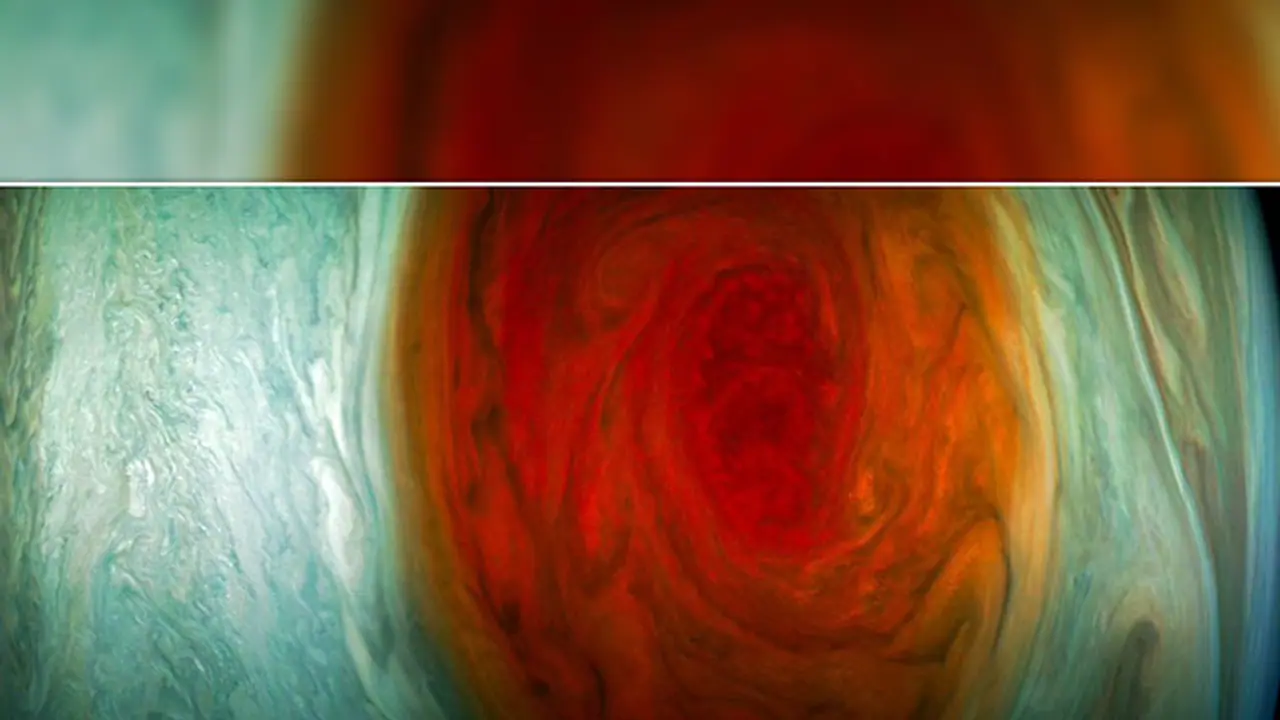This storm known as the Giant Red Spot is one of Jupiter's most famous features and it was captured by NASA's Juno spacecraft. The spacecraft made its closest fly by over the storm, it flew 9,000 kilometres above the storm. NASA released raw images of the storm and ask the public to process their own pictures.
NASA released images of a massive storm that's been raging in Jupiter for the past 350 years, This storm, otherwise known as the 'Giant Red Spot' is one of the planet's most famous features and it was captured by the space agency's Juno spacecraft. On July 11, Juno made its closest ever fly by over the planet; it flew 9,000 kilometres above the storm and captured the size and magnitude of the Giant Red Spot.

According to reports, the planet's storm is twice the size of Earth and has the capacity to engulf it. Space enthusiasts who've known about this finally got a chance to see raw images of the storm. Juno's SpaceCam took pictures through its red, green and blue filters to capture some features and gasses present in Jupiter's atmosphere. NASA then shared it with the public and asked space enthusiasts to process the images through their own filters and results are quite stunning.
Almost 40 years ago #NASA's Voyager 1 took these images of #Jupiter and it's #GreatRedSpot - today @NasaJuno will give us our best view ever
— Tom S (@AmazingSpace2) July 11, 2017
While the images of the Giant Red Spot are awe-inspiring, Juno's mission is also about collecting more data about the mysterious storm, which has been shrinking in size. According to Jared Espley, Juno program scientist atNasa HQ in Washington, the space agency will study the energy that's causing the storm, and look more closely at what's happening underneath the clouds, The Guardian reported.
So far, Juno's findings have revealed that Jupiter experiences torrential cyclones in its poles, the planet has an ammonia belt in its equator and its magnetic field is very strong, reported The Verge. Jupiter, the planet closest to the sun, is known for having a diverse composition of gasses and Juno has been studying this ever since it entered the planet's orbit in 2016.
Juno makes close fly bys every 53 days and the next will occur on September 1. However, the spacecraft won't hover over the storm anytime soon and we will have to wait for a long time before Juno makes a detailed study of the planet.
